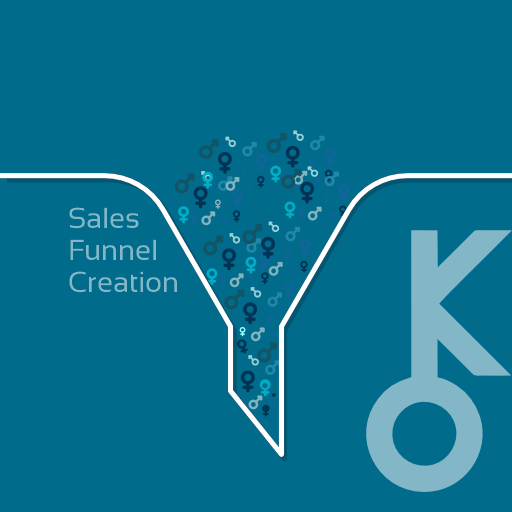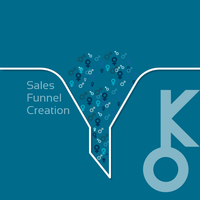Sales Funnel Strategies: SEO and Content Marketing

Sales funnel strategies encompass a wide range of techniques and tactics used to guide potential customers through the different stages of the buying process. Two crucial elements of effective sales funnels are search engine optimization (SEO) and content marketing. In this overview, we will delve into these strategies, exploring how they can be integrated into your sales funnel to drive traffic, increase conversions, and boost revenue.
The Sales Funnel
Before diving into SEO and content marketing, let's briefly understand the concept of a sales funnel. A sales funnel is a visual representation of the customer journey from awareness to purchase. It consists of several stages:
- Awareness: Potential customers become aware of your brand and its offerings.
- Interest: They develop interest in your products or services.
- Consideration: They consider your offerings as potential solutions to their needs.
- Conversion: They make a purchase or take a desired action.
- Retention: You engage with customers post-purchase to foster loyalty.
SEO in Sales Funnels
Search engine optimization (SEO) involves optimizing your website so that it ranks higher in search engine results pages (SERPs). Integrating SEO into your sales funnels helps attract targeted traffic which is more likely to convert.
Here are key aspects of using SEO within a sales funnel:
Keyword Research:
Identify relevant keywords that align with each stage of the buyer's journey within your industry or niche.
- Use tools like Google Keyword Planner or SEMrush to identify high-ranking keywords related to awareness ("how-to" phrases), interest ("best practices"), consideration ("product reviews"), conversion ("buy now"), and retention ("customer success stories").
On-Page Optimization:
Optimize webpages by incorporating keywords naturally into meta tags, headings, URLs, image alt texts, and content body.
Content Creation:
Craft high-quality, SEO-friendly content such as blog posts, articles, videos, and infographics that align with the buyer's journey stages. These should educate and engage potential customers throughout their decision-making process.
Link Building:
Earn backlinks from reputable websites to enhance your website's authority and improve search engine rankings.
Technical Optimization:
Improve website performance by optimizing site speed, mobile responsiveness, user experience (UX), and ensuring proper indexing of webpages for search engines.
Content Marketing in Sales Funnels
Content marketing involves creating and distributing valuable and relevant content to attract and retain a clearly defined audience. When integrated into sales funnels effectively, content marketing helps build trust, establish credibility, nurture leads, and guide prospects towards conversion.
Here are key aspects of using content marketing within a sales funnel:
Buyer Personas:
Develop detailed buyer personas to understand your target audience's needs, pain points, preferences, behaviors & habits.
Content Mapping:
Map out different types of content that resonate with each stage of the customer journey - awareness (blog posts), interest (eBooks/videos), consideration (case studies/whitepapers), conversion ("buy now" landing pages), retention (customer success stories).
Lead Magnets:
Create compelling lead magnets like eBooks or free downloadable resources to capture email addresses in exchange for valuable information or insights related to your products/services.
Email Marketing:
Utilize automated email sequences tailored to different stages of the sales funnel. Use personalized messaging to nurture leads with valuable content while gently guiding them towards conversion.
As you integrate SEO and content marketing strategies into your sales funnel effectively, keep testing and optimizing based on data-driven insights obtained from analytics tools like Google Analytics or ClickFunnels' built-in analytics feature.
Remember that an effective sales funnel is not just about generating leads but also nurturing them throughout their journey by providing valuable content and optimized user experiences.
Sponsored
Sponsored
Sponsored
Explore More:

The Impact of AI and Machine Learning
As technology continues to advance at a rapid pace, businesses are constantly looking...

Future of Sales Funnels
The future of sales funnels is an exciting and promising concept for businesses...

Lessons Learned from Failed Funnels
In the realm of sales funnel creation, case studies serve as valuable resources...

Successful Sales Funnel Examples
In sales funnel creation, case studies play a crucial role in demonstrating the...

Case Studies in Sales Funnel Creation
In the world of sales and marketing, case studies play a crucial role...

Sales Funnel Recovery Strategies
Sales funnels are a critical component of any successful sales and marketing strategy....

Improving Funnel Efficiency
A sales funnel is a crucial component of any business's marketing strategy. It...

Identifying Funnel Leaks
A sales funnel is a systematic approach to guiding potential customers through a...

Sales Funnel Troubleshooting
Sales funnel troubleshooting is the process of identifying and resolving issues or bottlenecks...

Sales Funnel Tools and Software: Landing Page Builders
Sales funnels are essential in driving conversions and increasing revenue for businesses. To...

Sales Funnel Tools and Software: Email Marketing Tools
Sales funnel tools and software refer to the various technologies and platforms available...

Sales Funnel Tools and Software: CRM Software
Sales funnel tools are software programs or applications designed to help businesses track...

Sales Funnel Tools and Software
A sales funnel is a framework used by businesses to guide potential customers...

Measuring Sales Funnel Performance: Analytics and Reporting
Measuring sales funnel performance analytics and reporting is a crucial aspect of any...

Measuring Sales Funnel Performance: Sales Funnel Metrics
Measuring the performance of your sales funnel is crucial for understanding the effectiveness...

Measuring Sales Funnel Performance: Key Performance Indicators (KPIs)
Measuring the performance of a sales funnel is crucial for any business aiming...